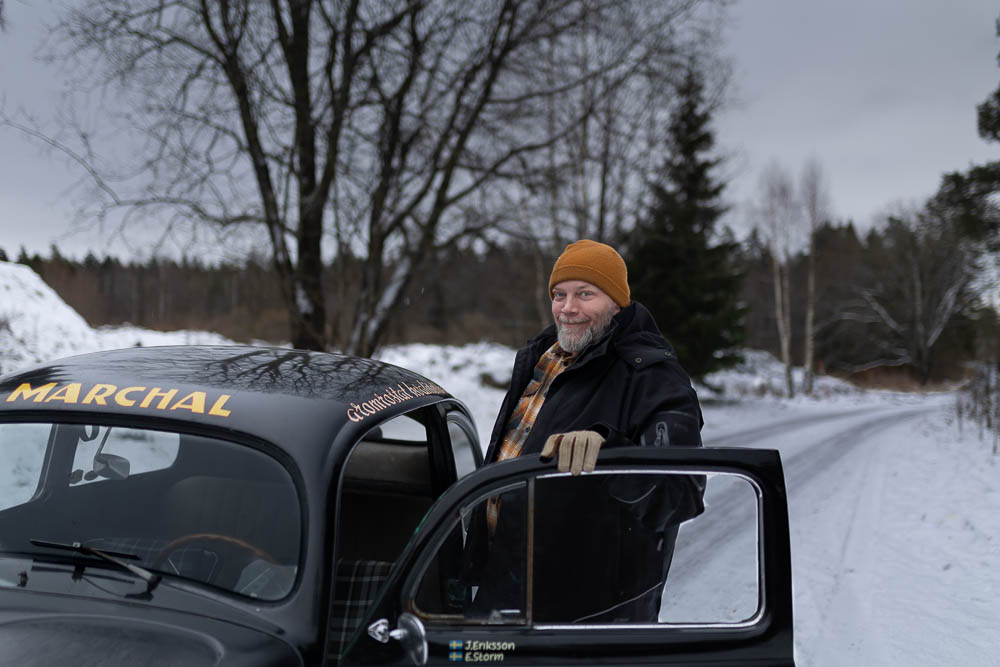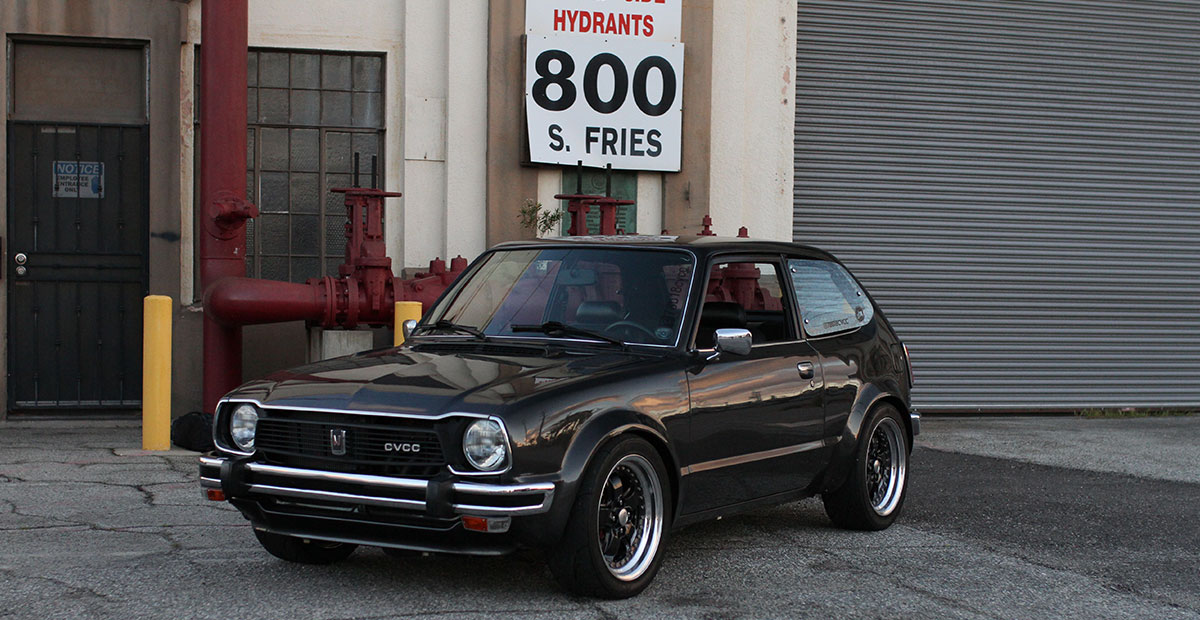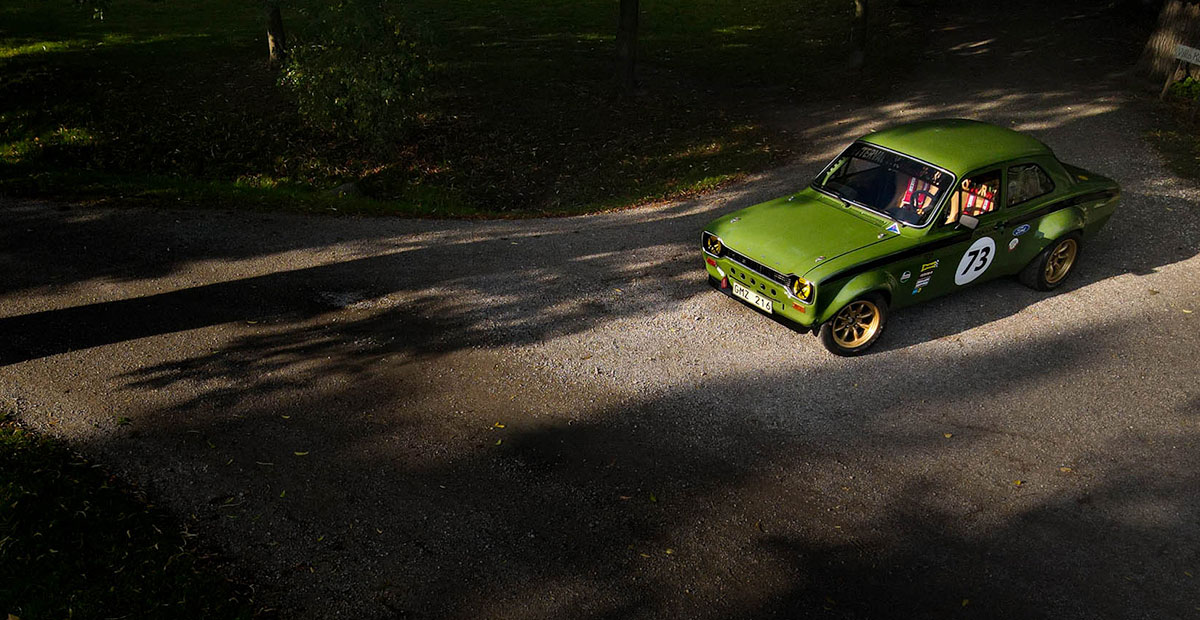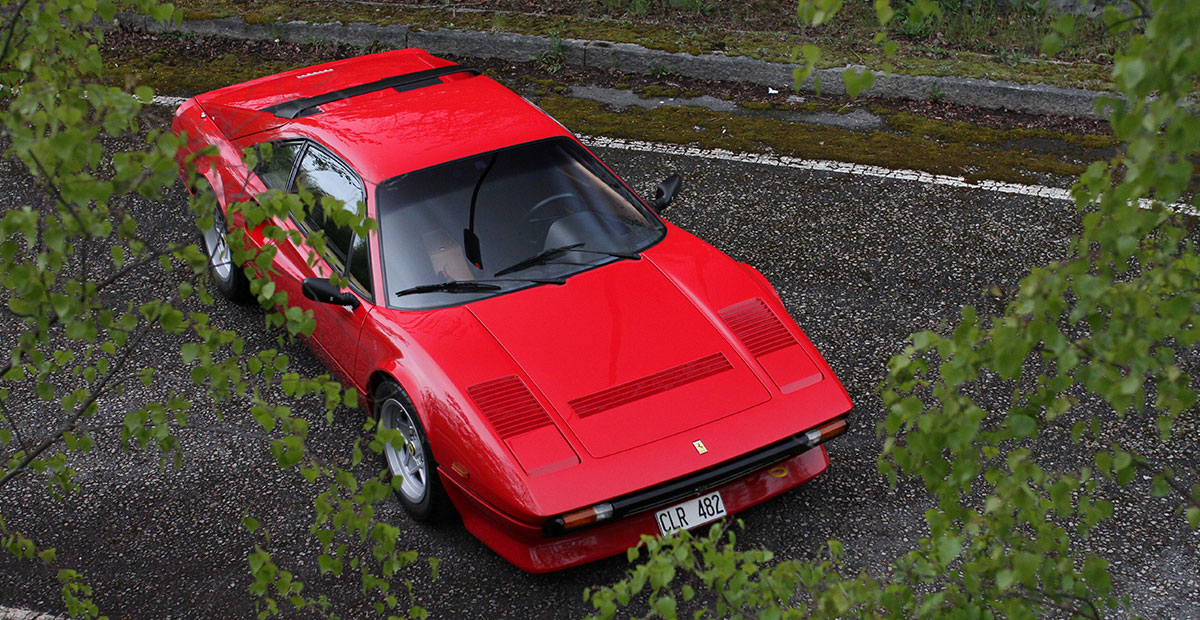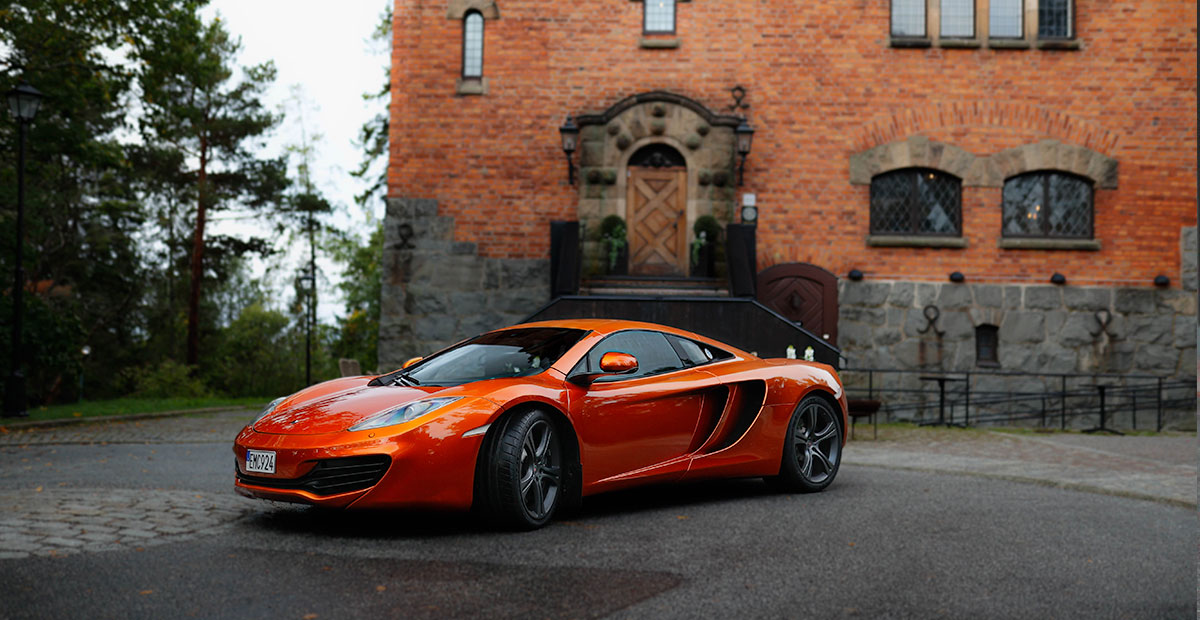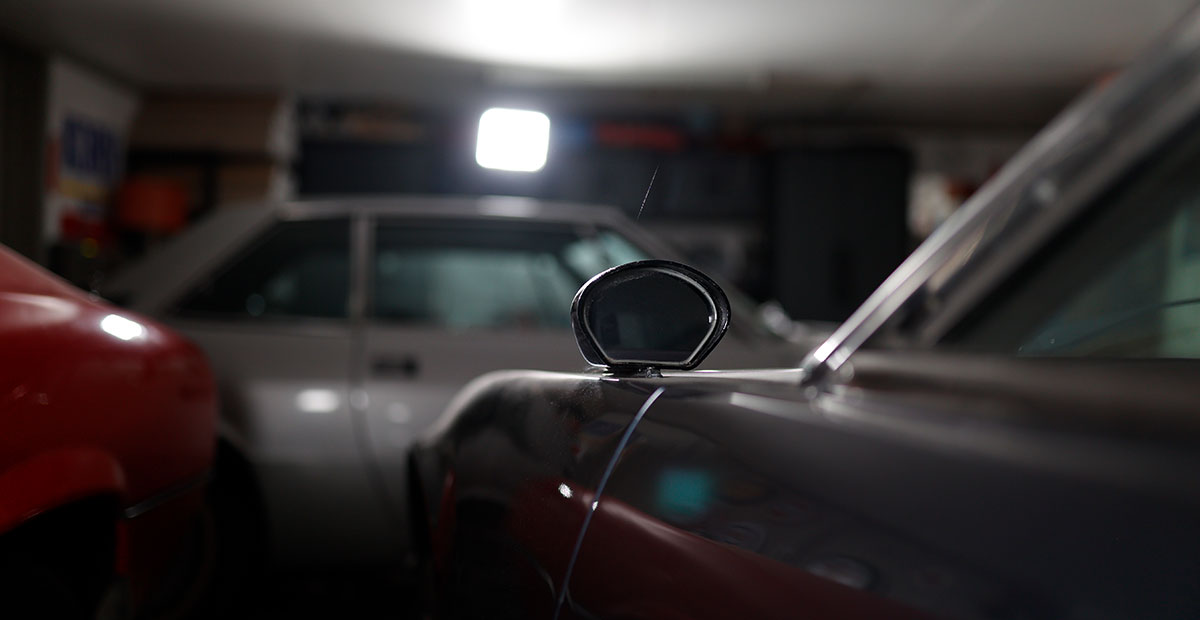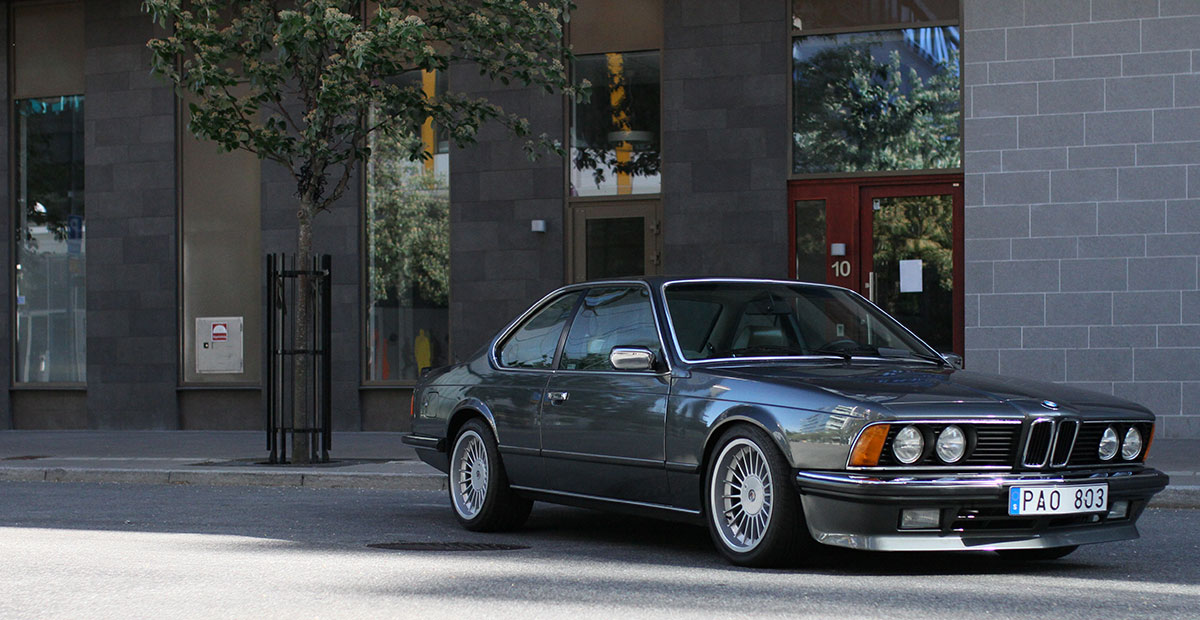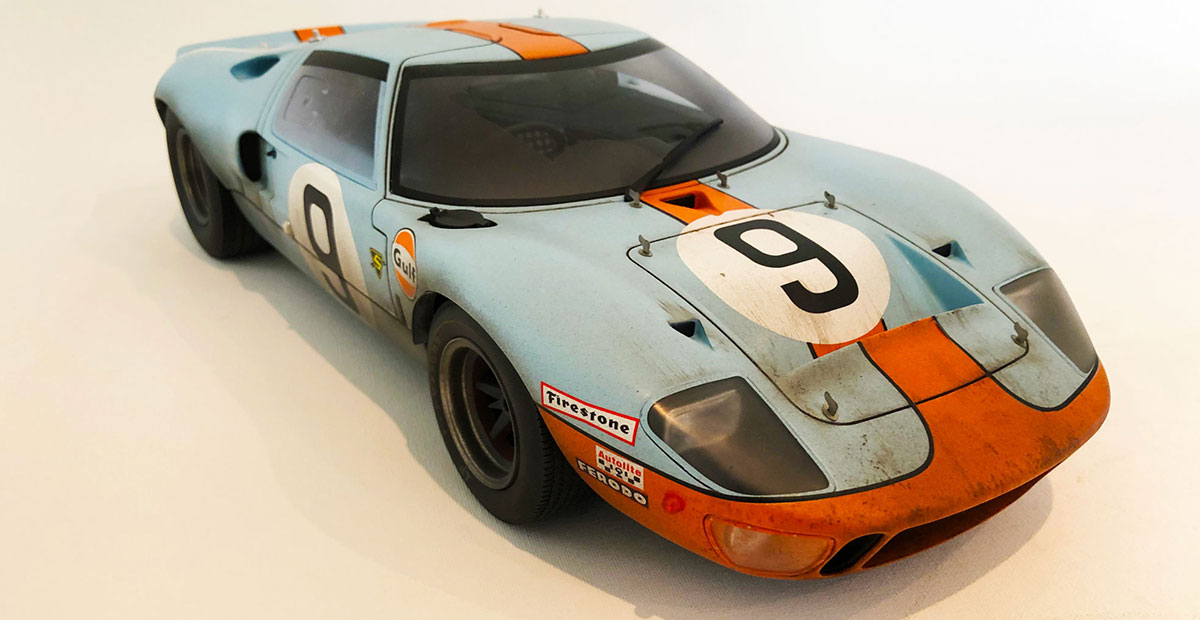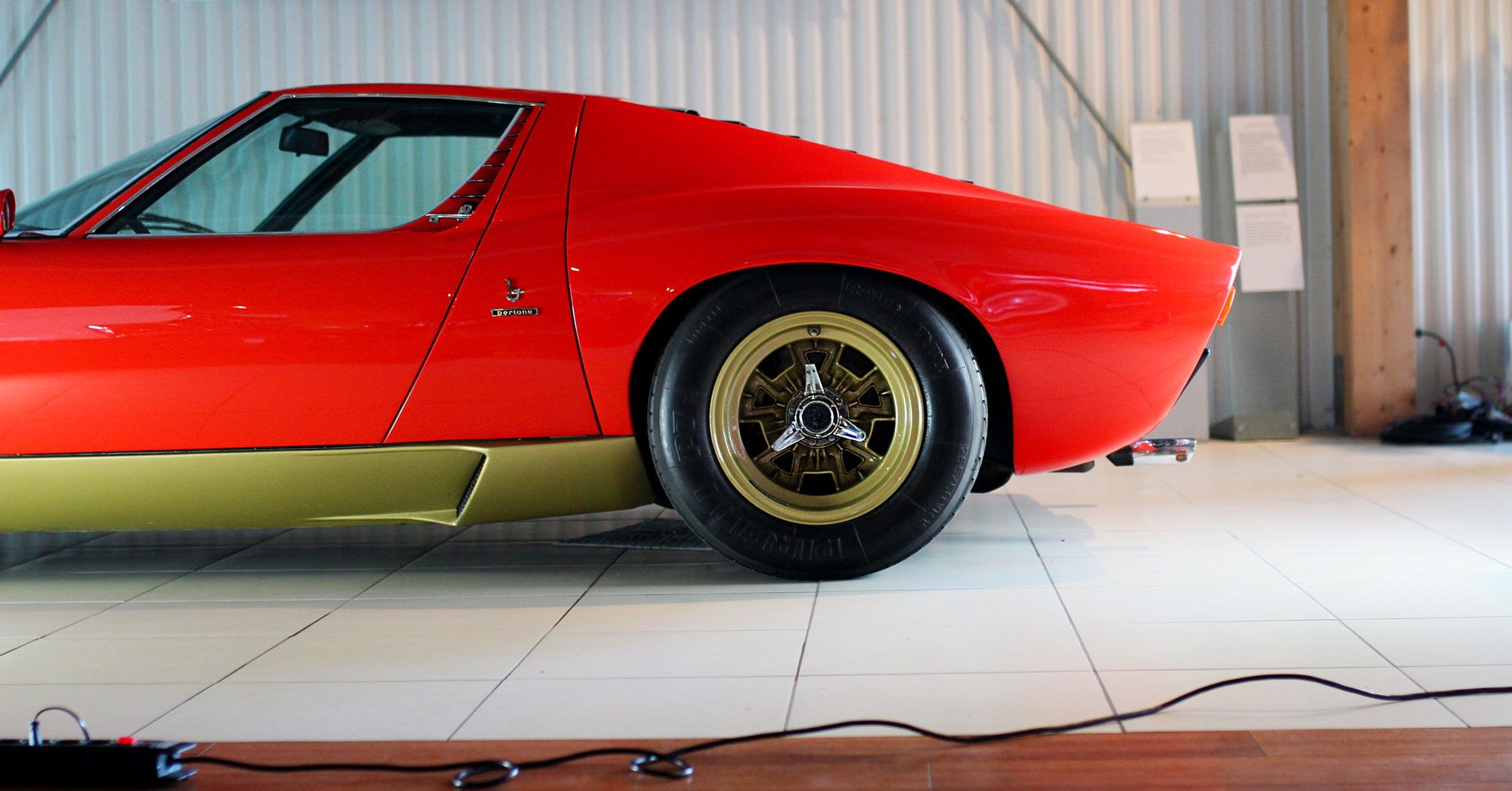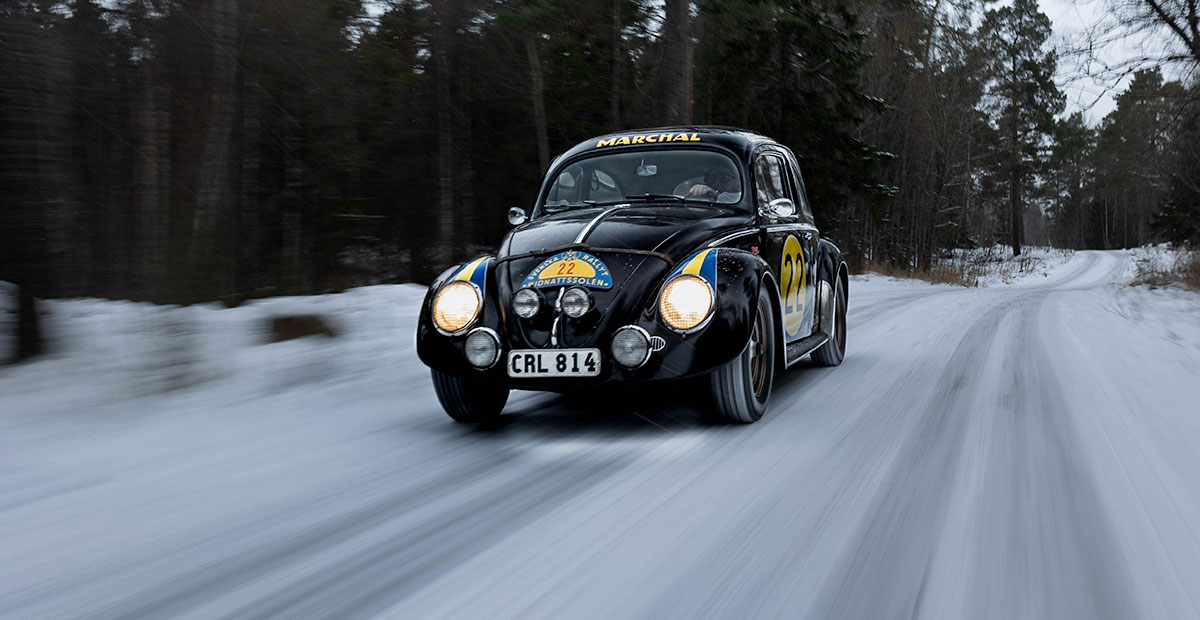
Text: Fascinating Cars and Jimmy Eriksson
The new Rally Beetle from the past
There I stand, halfway into the forest, as the wild 40-horsepower engine roars past – at a turnaround, I see how Jimmy jerks the stick he proudly talked about, making the Beetle slide around its own axis.
White smoke billows from my mouth as I frantically press the camera button. Inside the car, I see Jimmy’s smile. He gears up again and drives by, the round yellow ring with the number 22 on the side shines. Snow lies on the ground, and all six lights shine in the dim weather.
Jimmy Eriksson’s journey to this 1956 Type 1 Rally Beetle has been winding and has taken many different paths.
He has run a large blog focused on hard, low vehicles of all kinds but mostly American cars. He was deeply involved in the Japanese car world and started Sweden’s first Japanese car forum 23 years ago, while he has always had a foot in the Volkswagen world.
“When I was little, we always went to watch rallies in the forests around Gävle.”
His own “driving lessons” began, however, during nightly adventures when he was 13-14 years old. His neighbor Claes took him out on the ice in the middle of the night to drift with his Volvo 240. After much nagging, Jimmy also got to drive and learn to drift on the ice with the 240’s classic rear-wheel drive.
Jimmys first ever car became a Volvo 142.
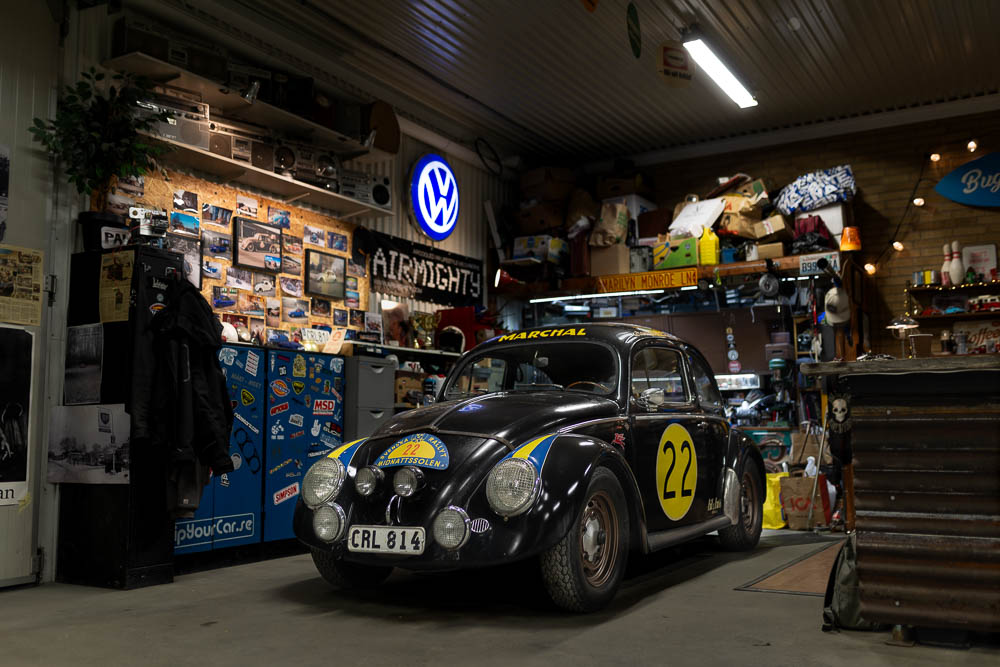
Inspiration for the Gevalia Beetle
In 2017, Jimmy was at Cold Balls (@coldballs) in Östersund with his camera to document, at the time he had no car of his own to drive.
One of the participants was Marco De Waal (@marcosupplies) , who had driven all the way up from the Netherlands in the super cold February. His light blue 1956 Beetle with a soft top and yellow auxiliary lights on the hood and in the bumper bracket was a car that made a lasting impression on Jimmy.
He had seen the car on the internet several years earlier but had no idea who owned it at the time.
“I’m definitely going to build one because it was so cool, and it made me think back to my times in the rally forest.”
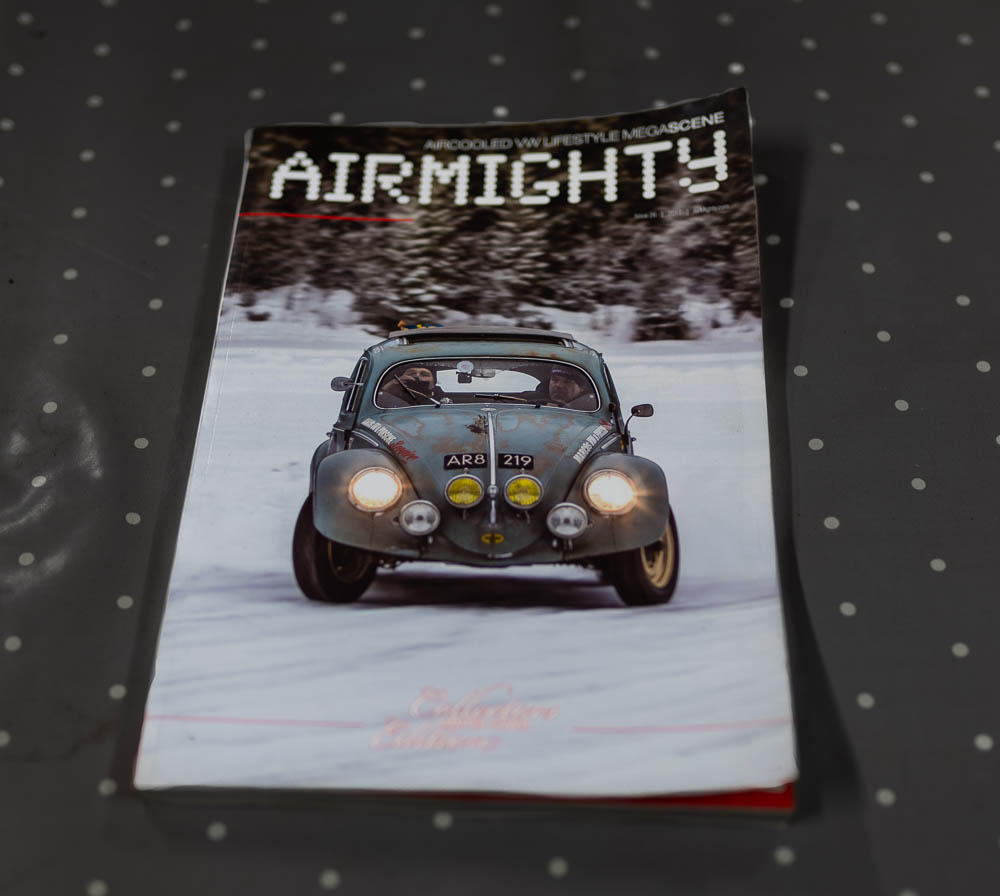
The goal became to build a “rally” Beetle and drive in Cold Balls with it.
Jimmy’s image of just Marco’s Beetle sideways in the Swedish snow later graced the front page of the magazine AirMighty (@niels_airmighty).
“My motto is that the car should be usable all year round. It shouldn’t be a beauty queen but should always be drivable, regardless of weather and season. Is it winter? Then it’s just a matter of changing tires.”
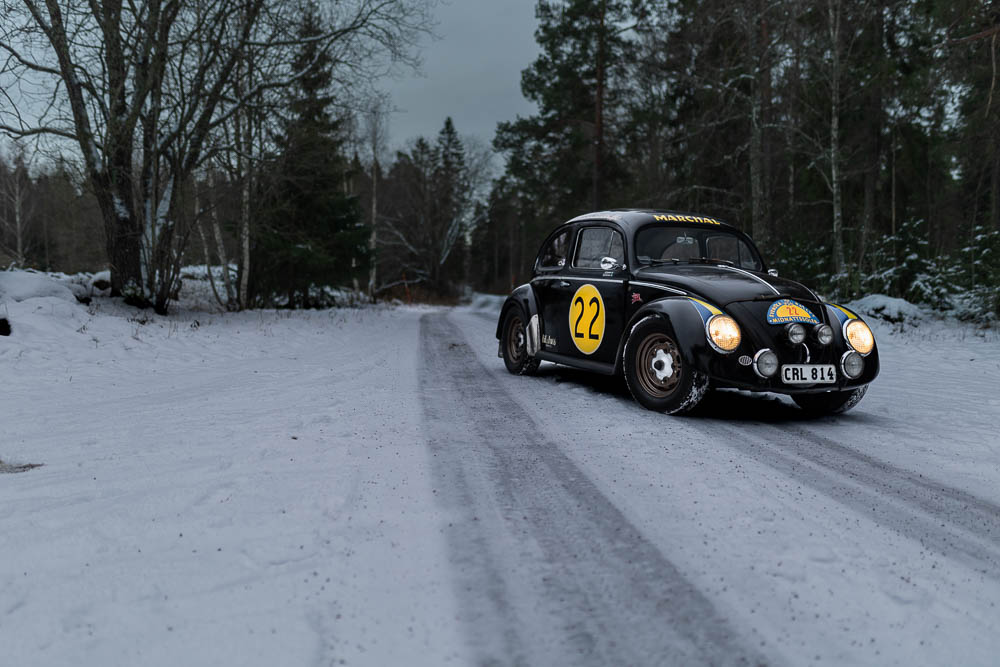
The purchase of the Gevalia Beetle
To figure out how Jimmy finally got hold of this particular Beetle, it’s a trail marked with two other Beetles involved. One blue and one brown.
“In 2003, I bought the blue Volkswagen from 1962, which became my first Beetle. I had big plans for it, but sold it a year later. However, I bought it back in 2015 only to sell it again a year later.”
The brown, extremely low Beetle entered the picture around 2013.
After a few back and forths, and an incredibly pleasant autumn drive in the newfound love Elin’s Beetle from 1968, he decided that enough was enough with driving a Beetle that scrapes the ground all the time.
Jimmy wanted to be able to use the hobby car and explore gravelly forest roads more than what a drastically lowered Beetle could manage. Said and done, the brown one was put up for sale in 2019 and within 24 hours, it was sold to Belgium, later ending up in France, where it resides to this day.
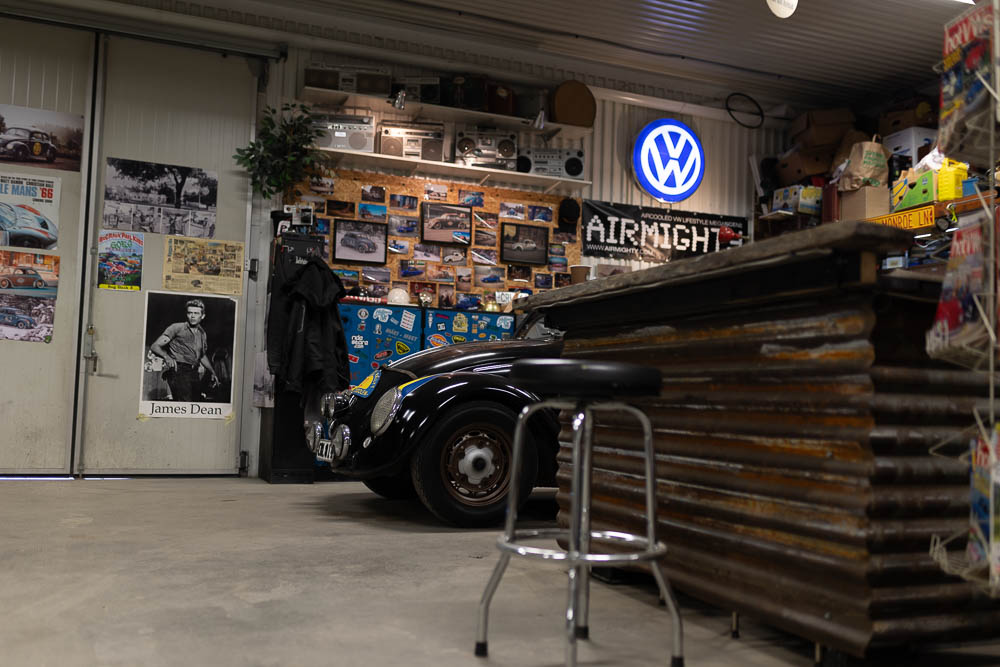
“An older gentleman came driving in a Beetle, and in the window, there was a note saying he had a ’56 Beetle for sale.”
“We went there the same day and looked at it where it stood in the barn.”
“It was completely empty inside, and someone had painted it snot green in the ’80s.”
The deal was made, and the car was picked up from Norrtälje on October 2, 2019.
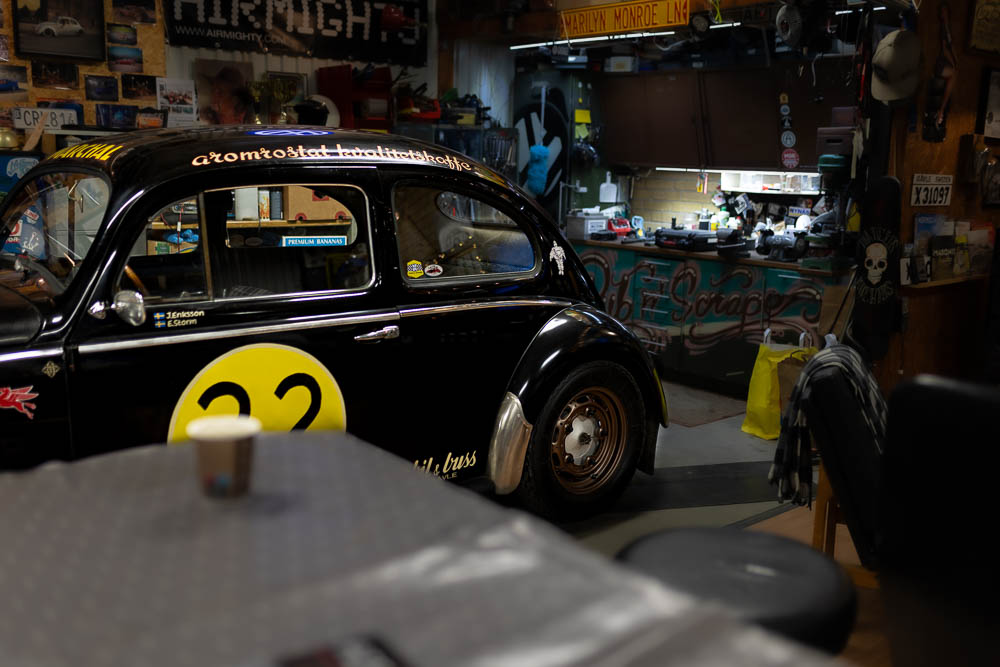
“Actually, I’m a huge Porsche nerd.”
It took three weeks and 2 liters of paint remover to finally scrape off the original paint of the car.
Unfortunately, several places had been sanded down before, so the Beetle has been touch-up painted from the trim down, while the roof retains its original paint.
Jimmy used matte paste to make the paint a bit more matte, plus he used a steel brush to make the newly painted part match the old.
The hood is the only body part that has been replaced; otherwise, everything is original, except for the punched 3.5-inch gills that friend Janne Bodin made in the engine hood.
“Actually, I’m a huge Porsche nerd, and the dream is to own a 356 coupé someday.”
But until then, Jimmy stays in the Volkswagen limbo, where, for example, the rims on the Beetle are original 4.5-inch Porsche KPZ/Lemmerz – painted in what Jimmy calls Volk TE37 Bronze.
The rims are slightly modified, inspired by the ’50s Porsches. To keep the weight down, he drilled 30 small holes right at the rim edge.
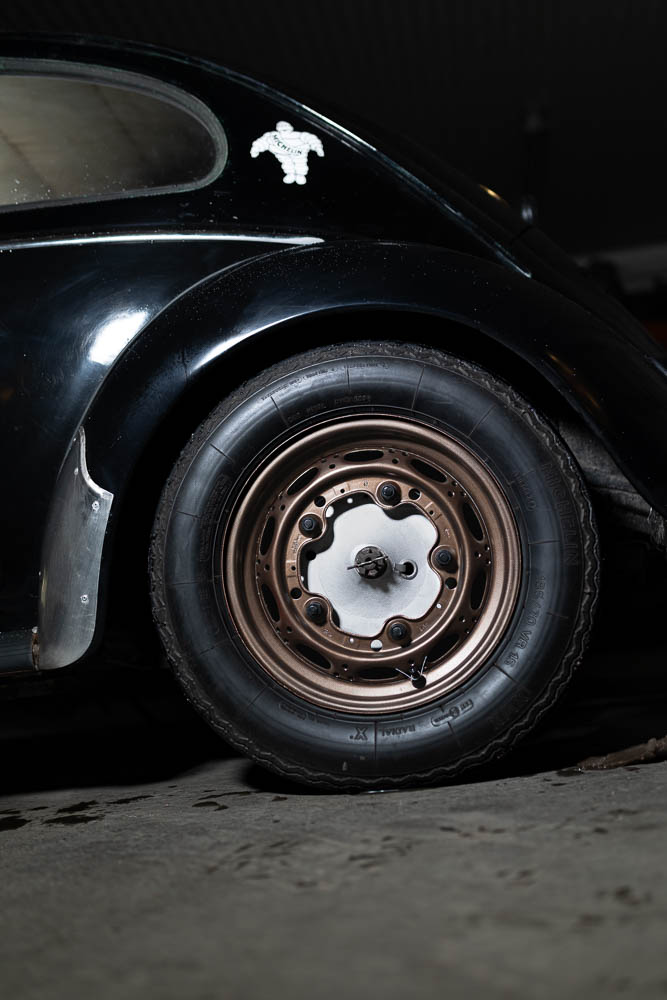
The tires mounted are Michelin XWX of size 185/70/15, and if you look closely, you’ll see that there are original Porsche 356 stem clips on the valves – well thought out, indeed!
Jimmy owned a pair of 356 original brakes earlier but sold them in a weak moment. Now, there are original brakes in the back, but in the front, there are brakes from a ’65 with a bit wider pads.
“The 356 brakes are still on my Christmas list to Santa, every year.”
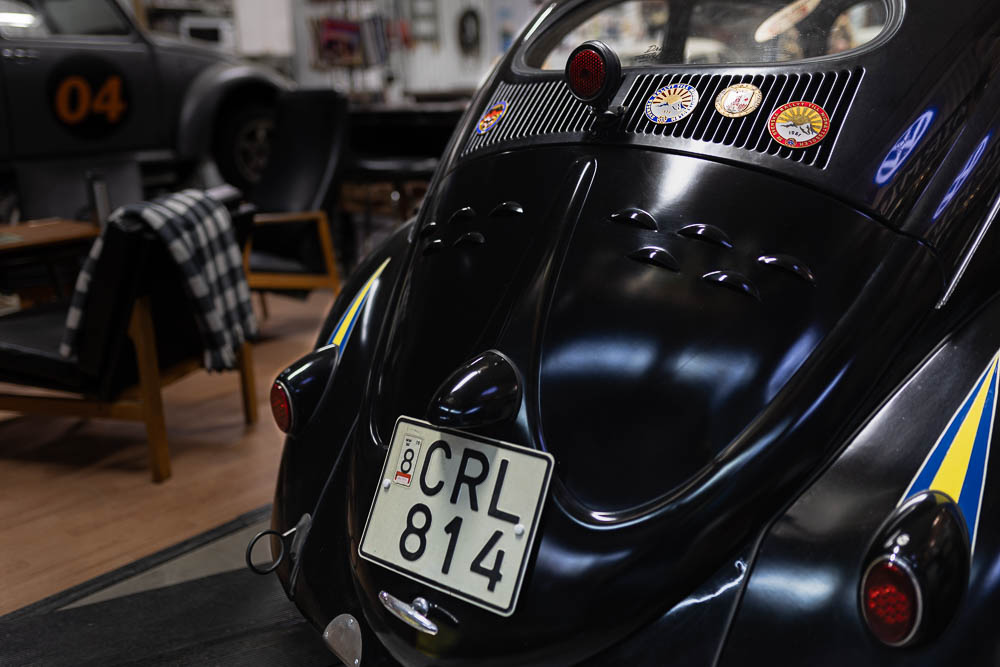
All the “stickers” and badges have a story
All the “stickers” on the car are hand-painted, just as it would have been done in 1956, by Jimmy and his good friend Harry Ojala (@pinstripefromhell).
Why Gevalia, one might ask?
Gevalia is a coffee brand founded in 1853 in Gävle, and to close the circle, they made deliveries in the mid-1950s with – ta-da – VW buses. That’s where the idea for the painted advertisement came from.
The rest of the signs each have their own stories.
Jimmy wanted to make his own Midnight Sun sign, on the front of the car, out of wood like the original, because all the ones for sale on various auction sites always skyrocketed in price.
After a post on Instagram about needing such a sign, an American – Mr. Eric (@big_e_deluxe) – replied that he had one lying around that he could scan and send over. Jimmy was thrilled and said yes, of course, and 20 minutes later, he had his template in an email.
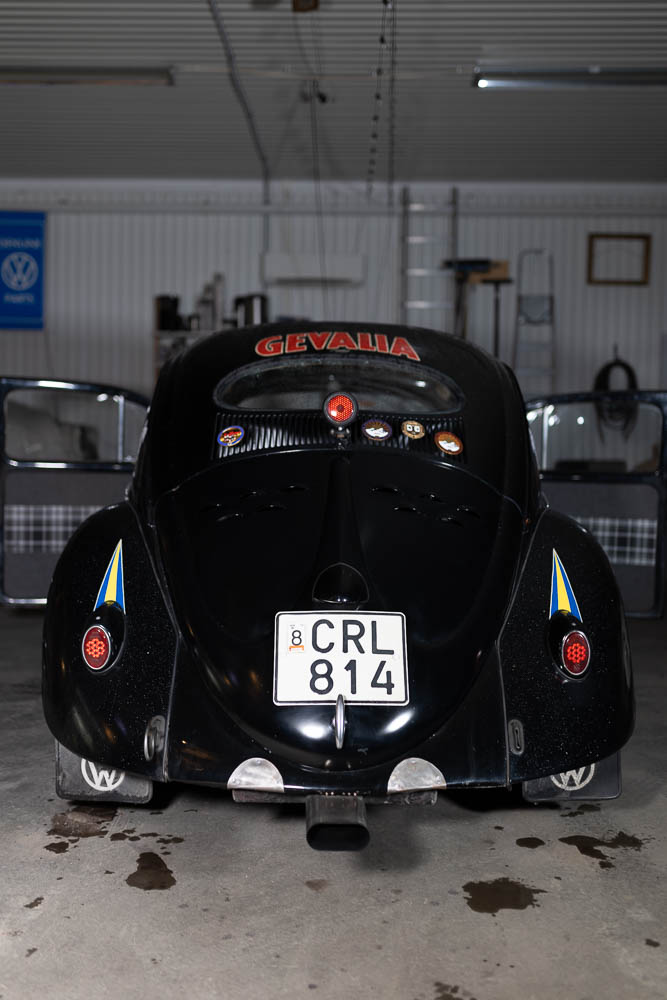
Anyone would think that’s where the story ends – but no. Just like everything else with Jimmy, there’s another layer.
A month later, a person from Stockholm contacted him, saying they had an original sign lying around. It was the sign that was on Rudolph Wessel and Ingmar Falgard’s Lloyd LP 400S, when they raced in the rally in 1954.
“Rather than making his own new sign, I suddenly found myself holding an original sign with the number 22 in my hand.”
In that deal, Jimmy also got two fantastic badges – one from the Midnight Sun Rally 1956 and one from 1961.
The joy was great, but… the story doesn’t end there.
A few months later, Jimmy received a DM on instagram from a person asking to buy the ’56 badge from him, his name was Cristian Kaiser (@vintage_porsche_racecars) – son of Porsche driver Gert Kaiser who participated in the rally in 1956.
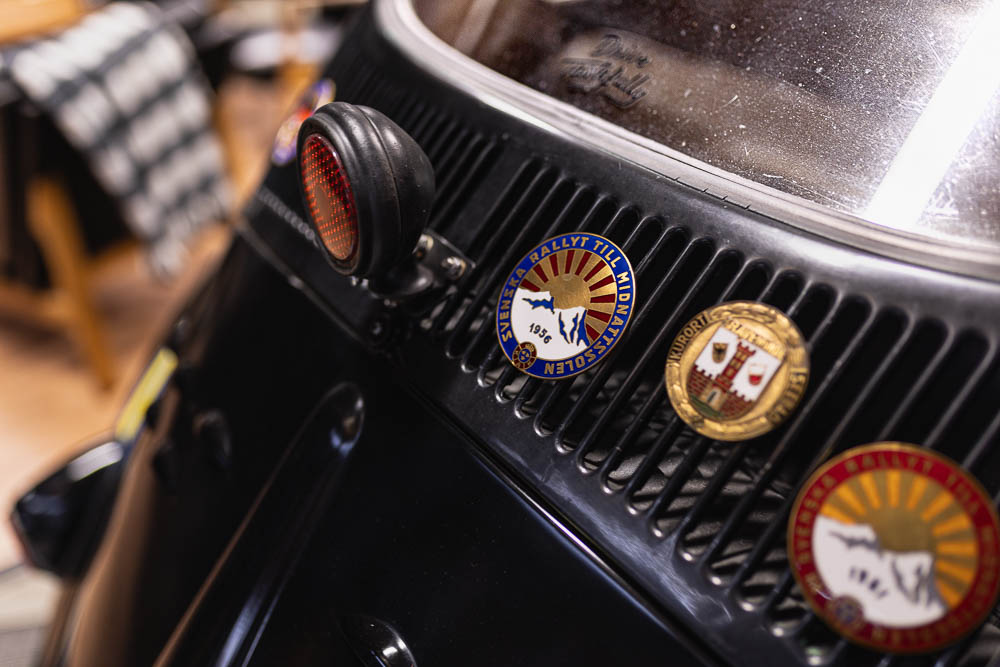
Cristian was restoring his father’s blue Porsche 356 Carrera that he had driven in the rally.
At first, Jimmy humbly said no, but after eight months, he felt it might be more fitting for an original rally Porsche to have the badge rather than his Beetle replica.
Said and done – the deal was made.
After that, Jimmy found another ’56 badge that now adorns the air vents above the engine hood.
The community in the garage is incredibly important
The front of the Beetle is heavily equipped with lights to illuminate the entire forest when the car slides through the rally darkness.
Marchal and Fantastic extra lights have been adorned with grilles, so they match the original headlamp grilles.
“The leather strap over the engine hood ensures it doesn’t come off in a collision. Safety is important.”
However, Jimmy hasn’t yet found a roll cage that fits well in the car.
“It’s a street car, and you lose quite a bit of space with a cage, but it does increase crash safety,” says Jimmy. “The ones available are often very heavy and incredibly expensive compared to what you get, so I’m waiting on that.”
As we sit and talk in the calm and tidy VW garage, and Jimmy goes through the car bit by bit, I realize he has left nothing to chance. Everything is well thought out and figured out.
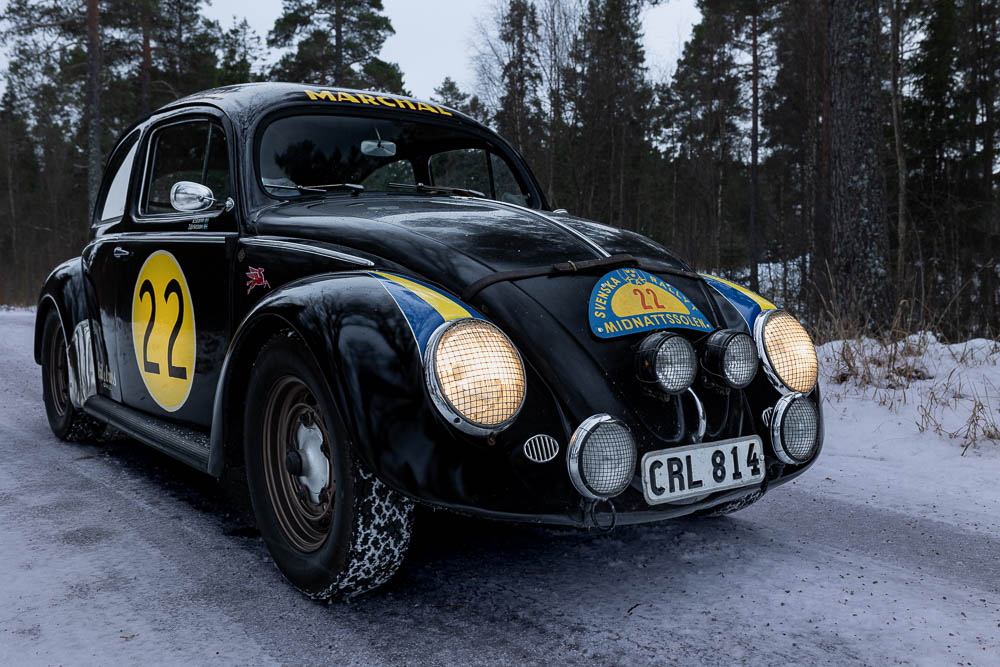
From where we sit, the car looks practically completely original, a rally Beetle from 1956, just as Jimmy wants it.
“My life was entirely the garage, until my partner came into the picture. Then the garage wasn’t as important anymore. The magical thing is that we met because she also drives a Beetle, so we have that as a common interest.”
Jimmy points behind us, and there stands a nice black Beetle with eyelashes around the lights.
“The community in the garage is incredibly important to me, and I’ve never built a car entirely by myself.”
“It’s fun to have people involved in the builds, like my friend Anton Olsson (@aanton.olsson), for example, who has helped me and been my sidekick for nearly 10 years. He likes to tinker with things I don’t.”
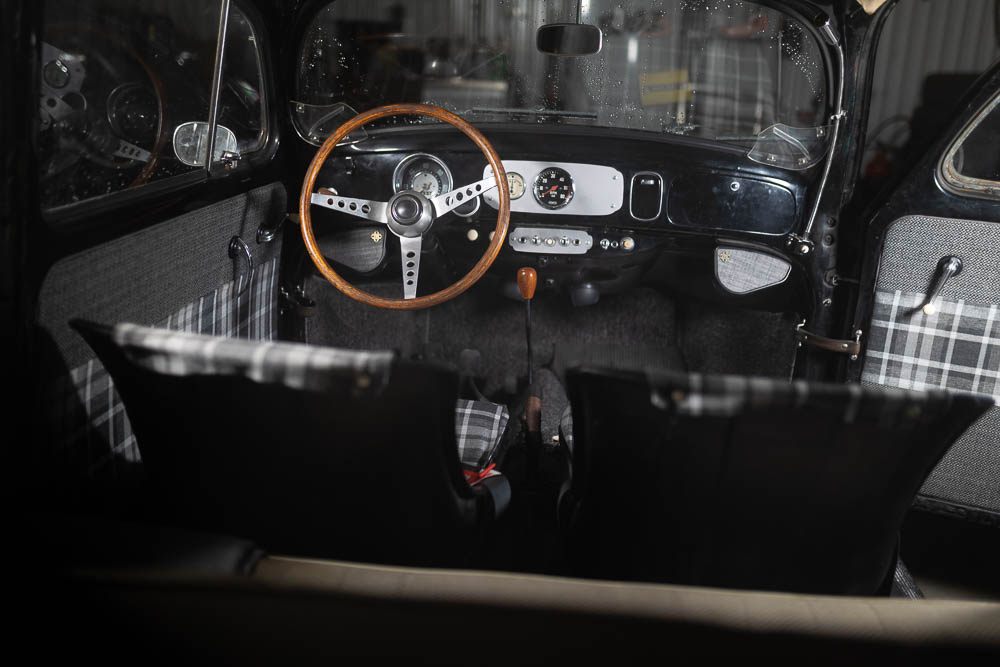
Diesel heater for Cold Balls
It’s built to be driven year-round, and Jimmy has focused a lot on the goal of making it to Cold Balls in Östersund.
“Yes, I installed a diesel heater in it so I wouldn’t have to sit shivering while drifting around in the forest and on the ice up there.”
We open the front hood, and there sits a heater that, according to Jimmy, only needs a liter of diesel to warm the Beetle for 2 hours. Inside the car, there are 2 vents down at the feet and 2 up at the windshield.
During a test, the heater warmed the cabin to 48 degrees Celsius, so it should suffice for Cold Balls.
A Sewing Machine and the Interior
Inside the cabin, everything is more or less remade – Jimmy has put a great finish on the entire interior.
The seats most likely come from the molds used for Eric Lundgren’s Ockelbo Ferrari (you’ll have to Google that story).
“They were ridiculously narrow for me when I got them, so I got help from my friend Magnus, who not only had the molds but is damn good with plastic, so he widened the back part a bit.”
With the help of his girlfriend and a sewing machine, they sewed the door sides and seats in a tartan pattern, all by themselves.
“When the new seats were placed, the original gear stick was a bit off, so I bent my own, which turned out quite nice and feels much better.”
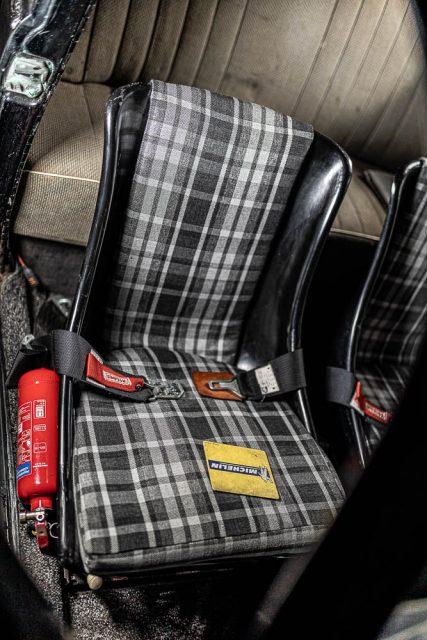
While my camera snaps pictures inside the cabin, Jimmy points with a big smile to the handbrake and proudly says he made a Ken Block handbrake. It’s meant to be easy to pull and yank, like a hydraulic handbrake, without getting stuck, and if you insert the pin, you can use it as usual.
Two-point Simpson belts lie on the seats, resting, while the Michelin ice scraper nearly screams with its yellow color in the otherwise color-modest interior.
Among the controls and meters, Jimmy tells about the VDO tachometer sitting in the middle of the hand-carved aluminum piece in the center of the dashboard.
He found the tachometer at a flea market in an old gas station in Östhammar, where he grew up 35-40 years ago. However, during his upbringing, it was his relative Tage who ran a Gulf gas station with an associated tire shop there.
Then he points to the GPS speedometer.
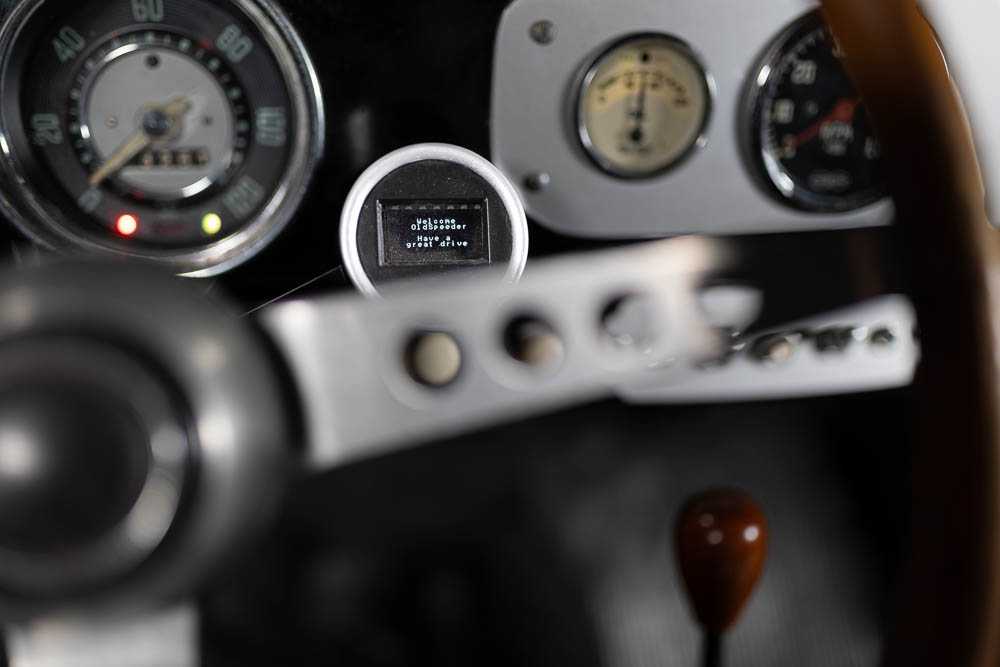
“Practically all speedometers are off, which I got hung up on, so this is the best insurance against getting more speeding tickets.”
The GPS comes from the Bulgarian tech-wizard Hayri, whom Jimmy found on Tindie.com. (www.tindie.com/olediuno-gps-cube/)
“When I bought it, it was the world’s smallest GPS speedometer with an OLED display.”
Jimmy’s friend Magnus made a neat 3D-printed holder for it, inspired by the old Motometer holders from the ’50s and ’60s, making it look as though it has always been there.
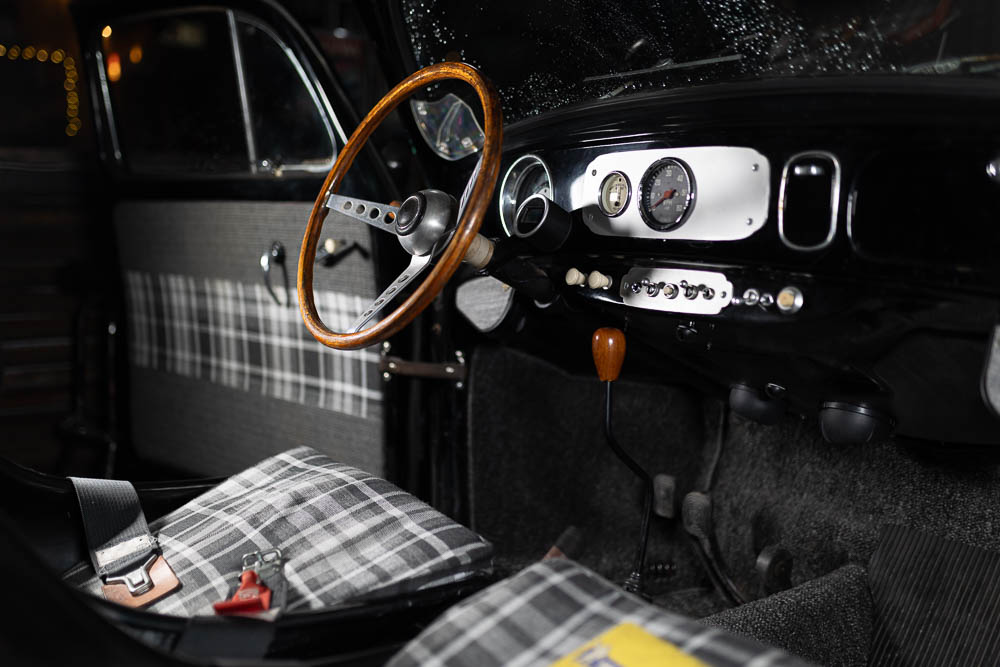
The Sound System
“If you’re an audio nerd, you must have good sound in the car.”
Jimmy had his ideas about how he would build his system, and again, Magnus, who quickly understood what was needed, stepped in.
Magnus went home to his 3D printer and conjured up two super nice boxes that fit perfectly with Jimmy’s Focal 165 AS3 3-way system.
With vintage speaker fabric and small Telefunken signs from his brother-in-law Urban, it looks entirely original ’50s. Super neat and creative at a high level.
The system is controlled by a small Nakamichi NDSK4165AU sound processor, whose display is hidden away in the glove compartment next to the diesel heater’s control panel, while two 6-1/2″ mid-bass speakers are hidden under each seat.
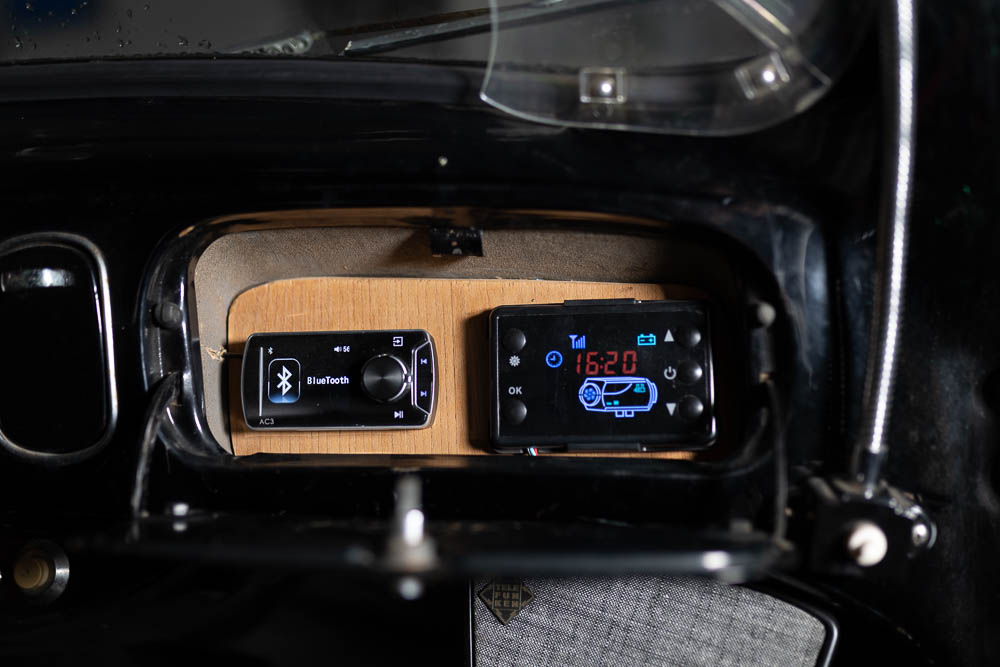
To top it all off and get that nice bass in the little Beetle, Jimmy has hidden a 6” Massive Audio XL64 woofer with a Rockford Fosgate 1000w Mono Amp behind the back seat.
“I didn’t want a showoff system, but a small, delicate system that isn’t visible. Which is difficult in a Beetle, because everything is visible! But this is how it had to be.”
As Jimmy shows me around the car, I can’t help but be impressed by how neatly everything is done.
The engine was water-cooled
“I managed to get two original 30-horsepower industrial Volkswagen engines from a friend’s father-in-law. They are to be rebuilt by Pär Andersson in Stugun, who is a whiz at building Volkswagen engines, back to original specifications from the 1950s.”
“Until one of them is ready, it has an original single-port 1300 engine in it.”
Jimmy continues to talk about the engine that is currently in the car
“When I got the engine from my friend Peter Forsberg, it had been sitting outside for 2-3 weeks.”
Per was planning to run around with a Harley engine in his Volkswagen rod instead.
“During the weeks the engine was outside, the tarp had blown off, so the first thing Anton and I did was drain it of 2 liters of water.”
Jimmy and Anton turned it over with fresh new oil and have since driven 600-700 kilometers without having to take it apart significantly.
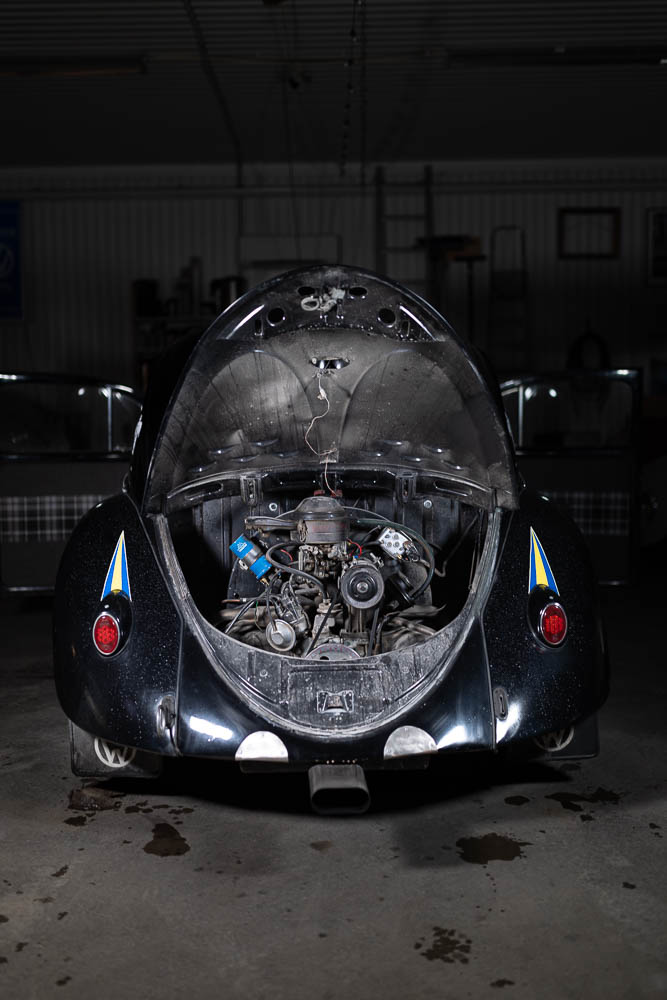
Out in the Snow
Snow slides down from the sky, filling the air while I hear music pumping from Jimmy’s Beetle. Hip hop. He comes driving down the road again.
The car is somewhat lowered with a lowering kit in the front and adjustable struts in the back. The rear wheels have 356 spacers to push them out 2 cm, which still makes a big difference. He stops, and I get a ride back to our starting place in the forest. The warmth inside the car hits me after having been kneeling in 20 cm of snow to get good pictures.
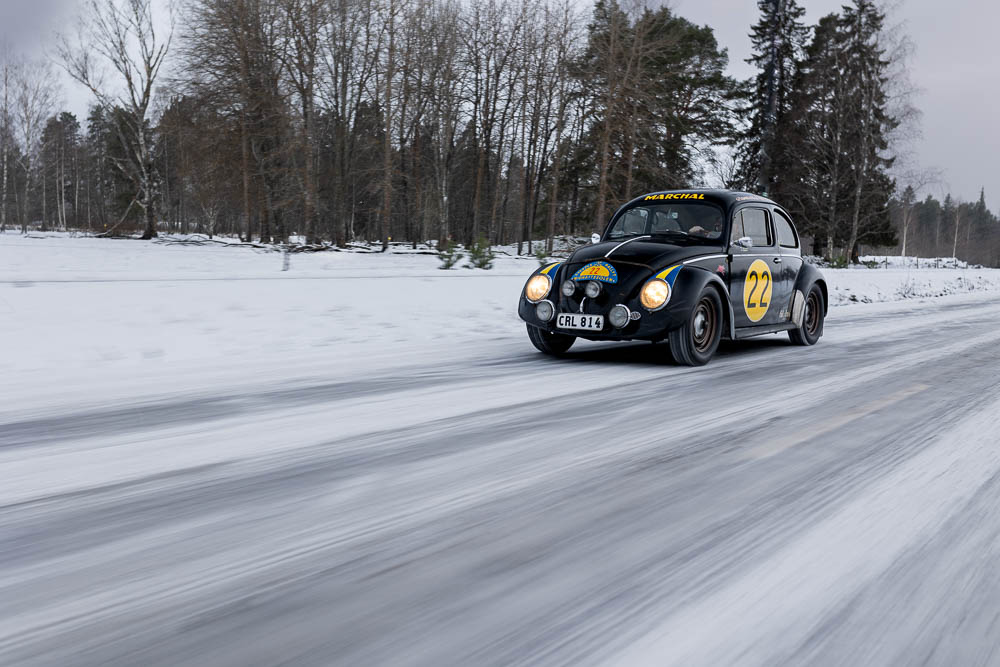
Jimmy’s smile is unmistakable; he enjoys sitting behind the wheel of his detail-crafted rally car, gearing up for Cold Balls 2024.
“I also have a goal to go down to Hessisch Oldendorf in Germany, where a gigantic air-cooled VW meet is held every four years. Thousands of cars come there from all over the world.”
“The whole town is closed off, and you’re only allowed to drive in if you have an air-cooled VW older than ’58, I believe.”
I know this Beetle would attract attention there too, just as it does from everyone we pass in a snow-covered Gävle.
